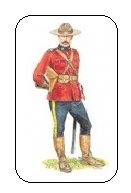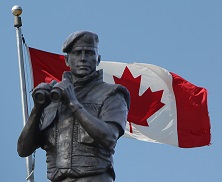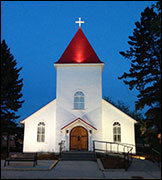True and Fascinating Canadian History
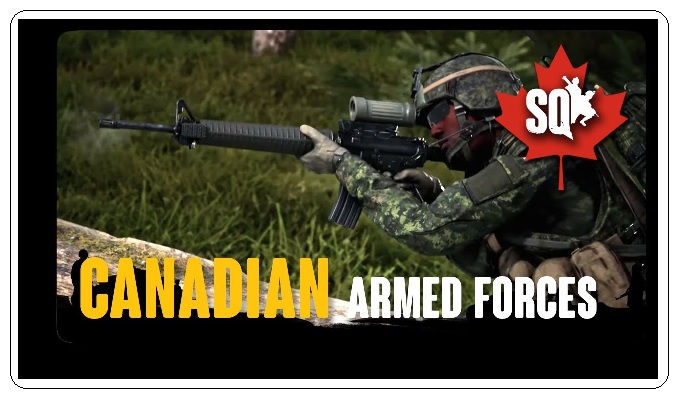
Vet of the Month: May, 2015
Reg.#2983, Sergeant Major Edward Hilliam
RCMP Vets. Ottawa, ON
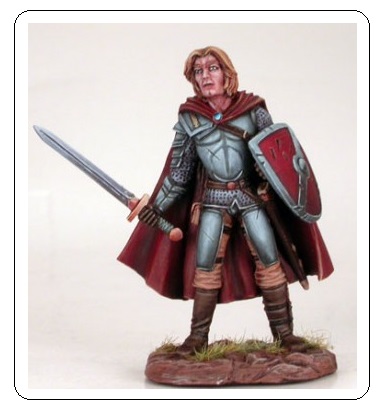
It is too bad now that no one knows Edward Hilliam's response, if as a child, he was ever asked, "What will you do Edward when you grow up?". But, even as a young boy, he himself might never have guessed that he would one day join the North West Mounted Police (NWMP), that be involved deeply in two wars, that he would bring honour to Canada and that he would eventually retire from the Canadian Army at the rank of Major-General.
It is somewhat surprising that so little is known about Edward Hilliam. Although he did gain some prominence during South Africa's Boer War as well as during WWI, his name does not stand out in the literature or in Canadian history books. Nor is his name mentioned on the Canadian War Museum Website. Nevertheless, as a pioneer member of the North West Mounted Police Edward Hilliam did contribute to Canada's efforts during the Boer War -- he later rose to the significant rank of Major General during WWI, he was a close associate of Field Marshall Julian Hedworth George Byng and he was one of "Byng's boys". He certainly deserves worthy mention for a life time of representing Canada abroad as a soldier, for his noticeable leadership qualities and for his bravery.
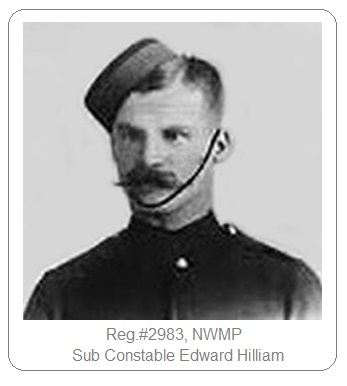
According to Archives Canada, Edward Hilliam was born in England and that he served as an Officer between 1883 to 1893 with the 17th Lancers -- a Cavalry Regiment of the British Army. Over the span of these years, Edward advanced through the ranks, first as a Trooper and capping off his early military life as a Captain. While in the Regiment, he established himself as a champion boxer. He won three boxing trophies and he was also the British Army’s Champion Swordsman for two consecutive years.
In 1893, Edward Hilliam immigrated to Canada and he promptly joined the North West Mounted Police in Ottawa, ON. He was 28 years of age. He went on to serve honourably at various posts including: Regina, SK, Fort MacLeod, AB, Cranbrook, BC and then he returned again to 'Depot' Division in Regina, SK.
Early in his career with the NWMP, it became obvious that Edward Hilliam was a self-disciplined man. He was promoted to Corporal in 1897 and to Sergeant in 1898. He served for a short spell in the stables at 'Depot' as a Riding Master. Among all the other men, he received favourable recognition and he demonstrated early signs of leadership. One report said that he was promoted again to Sergeant Major. Then, Edward Hilliam decided it was time to change careers. And, soon he would discover war in South Africa.
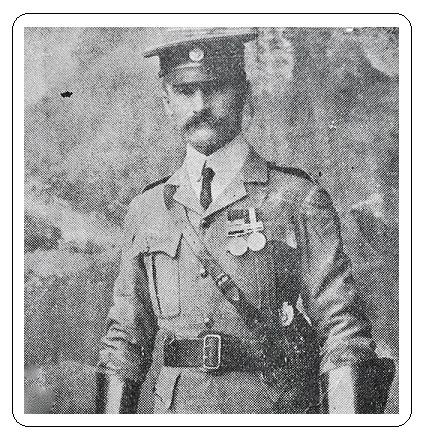
In 1900, Edward Hilliam was given a 'Free Discharge' from the Force so that he could join the 2nd Canadian Mounted Rifles*. The Boer War marked Canada's first official dispatch of troops to an overseas war**.
During the Boer War, Edward Hilliam quickly distinguished himself for his bravery. In battle, he was wounded three times and five horses were shot out from under him. In light of his brave deeds and his quick leadership, he was promoted to the rank of Captain and then placed in charge of a Unit within the Canadian Scouts.
Rather than return to Canada at the end of the Boer War, Edward Hilliam decided to remain in South Africa. He secured a Captain's position with the South Africa Cape Mounted Police and he led the Unit for three years. He returned to Canada in 1905 and made a new path for himself in Edmonton AB. His new life was set far apart and far distant from his former life as a professional soldier.
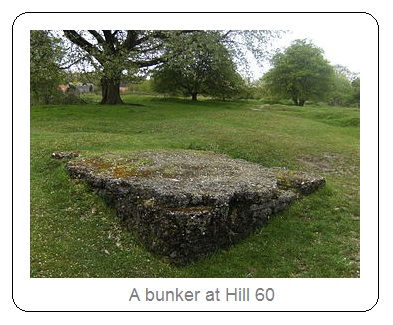
World War I was declared on July 28, 1914 and Edward Hilliam enlisted on August 4th, 1914. He was promoted to the rank of Captain and he was transferred to the 5th Battalion. The Battalion was transported to Valcartier, QC then it departed for England in October 1914. Edward helped to establish a Canadian Expeditionary Force Training Base at Shorncliffe, England. While at Shorncliffe, Captain Hilliam spend several months performing and practicing drill manoeuvres with his Contingent. Soon after, he and his Contingent were sent off to the Western Front.
At Ypres’ Hill 60 Edward Hilliam repeatedly led his men on attacks against advancing Germans, but he was shot in the chest. Only after the battle ended, was he evacuated to England for medical treatment. He made a speedily recovery and before long, he returned once again to the Front. And back to his men.
Once back on the Front, Captain Hilliam was deployed to the 25th Nova Scotia Battalion. Soon thereafter, he was promoted to Major then to Lieutenant Colonel In Charge of the Battalion. His leadership style was an inspiration to his men. His troops recalled that although he had been wounded earlier, he had initially refused to leave the Front. Instead, he had remained with his troops until their objective against the German forces had been secured. Amidst the muck, his stubbornness had emerged and acted as a lesson in manhood which his troops would never forget.
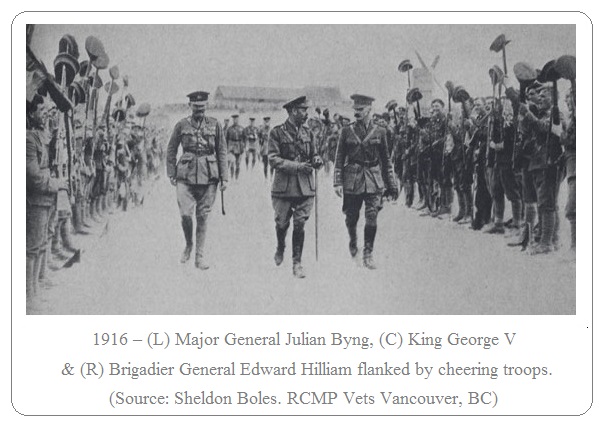
At the Somme, General Hilliam worked in close cooperation with the French who were so impressed with his feats of bravery that they awarded him with The Officer’s Legion of Honour and The Croix de Guerre with two leaves. In early 1917, Edward Hilliam was promoted to Brigadier-General.
On April 10, 1917 Brigadier-General Edward Hilliam commanded the 4th Canadian Division’s 10th Brigade which was ordered to take the final objective on Vimy Ridge – so called “The Pimple.” Hilliam's 4th Division encountered stiff fighting as compared to the other three Canadian Divisions, however, the final objective was successfully achieved on April 12, 1917. Later, Hilliam was seconded to the 44th British Brigade and later to the 102nd British Infantry Brigade. While attached to the British Army, he was promoted to Major-General.
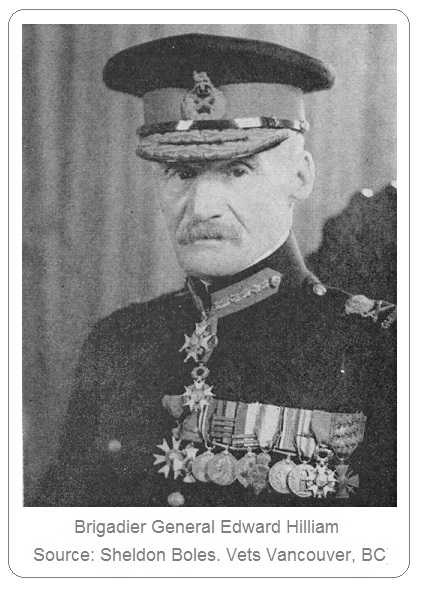
At war's end, Edward was 57 years of age. He returned to civilian life and he settled down in Sorrento, BC. He regularly received visitors from a wide range of veterans including Julian Byng who was his Canadian Commander at Vimy Ridge. In 1919, Julian Byng was appointed Governor General of Canada.
Over the span of a distinguished military career, Major-General Hilliam was highly decorated. He received the:
Commander of the Order of the Bath;
Companion of the Order of St. Michael and St. George;
Distinguish Service Order Medal with 1 bar;
France’s Officer level Legion of Honour;
France’s Croix de Guerre with two leaves; and he was
Mentioned in Dispatches six times.
Years later, age and his wounds eventually caught up with General Edward Hilliam. He died at the age of 86 years on May 21, 1949 at the Shaughnessy Military Hospital in Vancouver BC. His funeral was attended by hundreds of old Boer War and World War I Veterans. The Force was represented too as the RCMP provided his Honour Guard.
Major-General Edward Hilliam deserves to be long remembered for his remarkable career and for thehonourable and professional way in which he represented Canada.
Reg.#2983, NWMP Sergeant Major Edward Hilliam was buried in Burnaby, BC. His grave was found bySheldon Boles, Vets Vancouver, BC.
Reporting from Fort Healy,
J. J. Healy
May 23, 2015
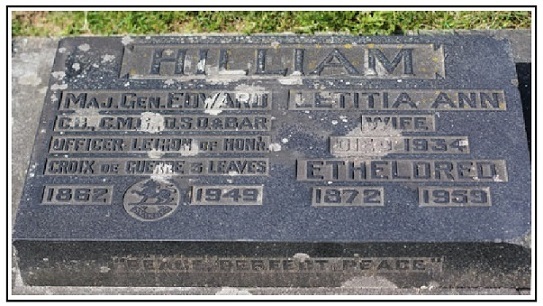
Notes:
*Historical Note 1. "During the Second Boer War, members of the North-West Mounted Police were given leaves of absence to join the 2nd Battalion, Canadian Mounted Rifles (CMR) and Strathcona's Horse. The Force raised the Canadian Mounted Rifles, mostly from NWMP members, for service in South Africa. For the CMR's distinguished service there, King Edward VII honoured the NWMP by changing the name to the Royal North West Mounted Police (RNWMP) on June 24, 1904".
(http://en.wikipedia.org/wiki/Royal_Canadian_Mounted_Police.)
**Historical Note 2. "While many English-Canadians supported Britain's cause in South Africa, most French-Canadians and many recent immigrants from countries other than Britain wondered why Canada should fight in a war half way around the world. Concerned with maintaining national stability and political popularity, Prime Minister Sir Wilfred Laurier did not want to commit his government. Yet the bonds of Empire were strong and public pressure mounted. As a compromise, Laurier agreed to send a battalion of volunteers to South Africa".
(http://www.warmuseum.ca/cwm/exhibitions/boer/boerwarhistory_e.shtml)
Source for Medals and Awards earned by Edward Hilliam: There Canadian Expeditionary Force Study Group Dedicated to the Study of the Canadian Expeditionary Force.
The Great War of 1914 - 1919
http://www.cefresearch.ca/phpBB3/viewtopic.php?f=3&t=11947
I would like to acknowledge the kind assistance which I received from my good friend Sheldon Boles, RCMP Vets Vancouver, BC and for all his help and for the photos which were used in this May, 2015 Vet of the Month story. JJH.
